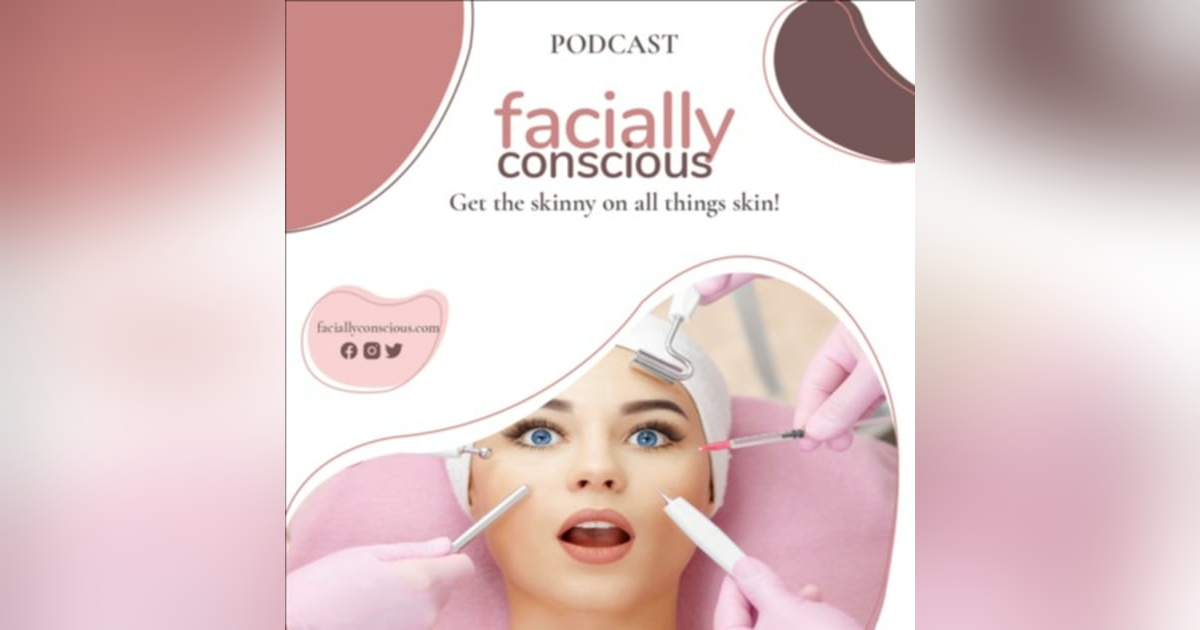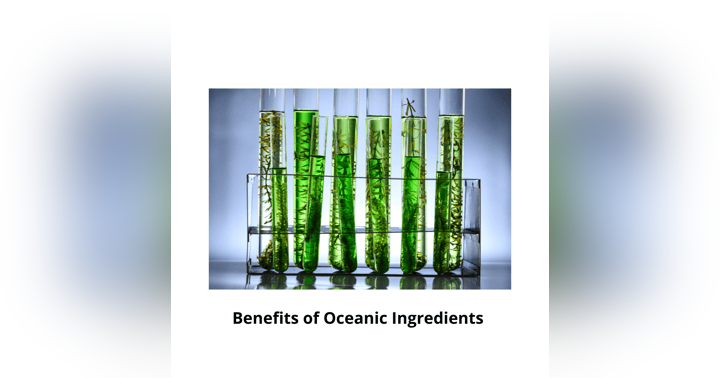The Mysteries of Cosmetic Ingredients: A Deep Dive into Ingredient Lists

As an esthetician, I've always been fascinated by the world of skincare, but I can admit that navigating the ingredient lists of our favorite products can be downright confusing. Whether you’re a skincare novice or a seasoned expert, understanding the names and roles of the ingredients in your products is crucial. That’s why I was thrilled to have Dr. Mindy Goldstein, a leading expert in cosmetic chemistry, join us on the Facially Conscious Podcast to demystify the enigmatic world of cosmetic ingredients and their naming conventions.
Dr. Goldstein is no stranger to the intricate science behind skincare. With a Ph.D. in basic medical sciences and extensive experience in DNA repair, she has contributed to some of the most significant innovations in the beauty industry. She serves on the International Nomenclature Committee, a prestigious body that names cosmetic ingredients—a role she’s held for over 27 years! With such a rich background, we were excited to invite her to share an in-depth look at how ingredients are named and regulated and why understanding these aspects is essential for professionals and consumers alike.
The Importance of Ingredient Lists
Let’s start with the basics—why do ingredient lists matter? According to Dr. Goldstein, the primary purpose of an ingredient list is to inform consumers about what’s inside the product they’re using. This is crucial for transparency and safety, particularly for those with allergies or sensitivities. For example, if you're allergic to peanuts, you’d want to avoid products that contain peanut-derived ingredients. The ingredient list allows you to make informed choices about what you put on your skin.
However, the way these ingredients are listed can be complicated. They’re listed in descending order of concentration, meaning the ingredient that makes up the largest portion of the product comes first, followed by those present in smaller amounts. But here’s where it gets tricky—anything under 1% can be listed in any order, and some highly effective ingredients are used in such small amounts that they appear toward the end of the list. This means that just because an ingredient is low on the list doesn’t mean it’s not doing some heavy lifting.
The Science Behind the Names
Dr. Goldstein provided a fascinating glimpse into the world of cosmetic nomenclature. Every ingredient name on a product label is meticulously chosen by the International Nomenclature Committee, part of the Personal Care Products Council (PCPC). This committee meets five times a year to review applications from companies that want to name new ingredients. It’s a rigorous process involving experts from various fields, including chemistry, pharmacology, and botany.
One of the most interesting parts of the discussion was learning how natural ingredients are named. For example, if a product contains an extract from the licorice root, the ingredient list will include the genus and species of the plant, followed by the part of the plant used and the type of extract. This level of detail helps ensure that the ingredient is accurately represented, which is important for both efficacy and safety.
Debunking Myths About "Chemicals"
In today’s world, there’s a lot of fear around the word “chemical.” However, as Dr. Goldstein pointed out, everything is a chemical—water, vitamins, even the air we breathe. The term "chemical-free" is a marketing myth because no cosmetic product can be chemical-free. When consumers say they want “chemical-free” products, they usually refer to avoiding synthetic ingredients in favor of more natural options. But it’s important to remember that natural doesn’t always mean better or safer. Some natural ingredients can be just as irritating or allergenic as synthetic ones.
This brings us to another key point—just because an ingredient is labeled as “active” doesn’t necessarily mean it’s better. In cosmetics, we often refer to these as “performance ingredients.” These ingredients deliver the results but don’t always need to be present in large amounts to be effective. For instance, peptides are incredibly effective at very low concentrations, so they might appear low on the ingredient list, but that doesn’t diminish their impact.
Understanding Labeling Laws
Another highlight of our conversation was the discussion around labeling laws. In the United States, the Fair Packaging and Labeling Act requires that all ingredients in a product sold to consumers be listed on the package. However, this doesn’t apply to professional-use products, which can sometimes make things tricky for estheticians like me when clients bring in products without ingredient lists because they threw away the box.
In such cases, looking up the Ingredient list online or contacting the company directly is always a good idea. Dr. Goldstein noted that while many companies list their full ingredient decks on their websites, some might only include the primary ingredients. This is another reason why contacting the company for the full list can be helpful, especially if you’re dealing with a potential allergy.
In the European Union, the rules are even stricter. Any allergens present in a fragrance must be listed separately on the label, a requirement that doesn’t exist in the U.S. yet. However, many companies that sell products internationally will include this information on their U.S. labels to comply with European regulations.
Takeaways: What to Look For
So, what should you be looking for on an ingredient list? Here are a few takeaways:
- Don’t Panic About Placement: If a key ingredient appears low on the list, it’s not necessarily bad. Some ingredients are highly effective at low concentrations.
- Be Aware of Allergens: If you have known allergies, familiarize yourself with the scientific names of those allergens, as they may appear on the label under those names.
- Chemical ≠ Bad: Remember, everything is a chemical! Don’t be swayed by marketing terms like “chemical-free,” as they are misleading.
- Understand the Regulations: Due to differing regulations, labels in the U.S. and EU might look different. If you have any doubts, please contact the company for clarification.
Our conversation with Dr. Goldstein reminded us that understanding the science behind skincare is fascinating and empowering. The more we know about what’s in our products, the better choices we can make for our skin. So, next time you pick up a bottle of your favorite moisturizer, take a moment to appreciate the science that went into creating it—right down to the very last ingredient.
I hope you found this deep dive into cosmetic ingredients as enlightening as I did. For more details and resources, be sure to check out our show notes and blog links. And as always, stay facially conscious!
Trina Renea
Your Skincare Expert & Host of Facially Conscious
This blog post aims to provide a detailed yet engaging summary of our latest podcast episode with Dr. Mindy Goldstein. By focusing on the science of cosmetic ingredients and their naming conventions, I hope to have shed some light on a topic that’s often shrouded in mystery. Happy reading, and even happier skincare shopping!
SHOW NOTES:
International Nomenclature Committee
Personal Care Products Council
Japan Cosmetic Industry Association
CIR - Cosmetic Ingredient Review
INCI - International Nomenclature Cosmetic Ingredient
Fair Packaging and Labeling Act
USP - United States Pharmacopeia
USAN - United States Adopted Names
GRAS - generally regarded as safe and effective
NAD - National Advertising Council
**Disclaimer** Any articles or information we say "are in the show notes" can be found in our blog about this episode blog at faciallyconscious.com.
Have a question? Send us an email at info@faciallyconscious.com
LIKE, FOLLOW & REVIEW US ON INSTAGRAM, & WHERE YOU LISTEN TO PODCASTS!
Visit our website faciallyconscious.com
Join our new Patreon and Substack for more content from Facially Conscious
Follow Our Hosts On Instagram
Trina Renea - Medically-trained master esthetician and celebrities’ secret weapon @trinareneaskincare and trinarenea.com
Julie Falls- Our educated consumer is here to represent you! @juliefdotcom
Dr. Vicki Rapaport -Board Certified dermatologist with practices in Beverly Hills and Culver City @rapaportdermatology and https://www.rapdermbh.com/
Rebecca Gadberry - Our resident skincare scientist and regulatory and marketing expert. @rgadberry_skincareingredients









